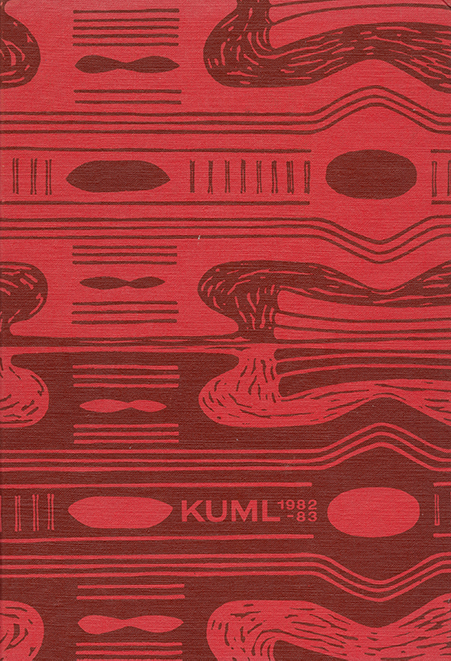Archaeomagnetic experiments on reconstructed kilns
DOI:
https://doi.org/10.7146/kuml.v31i31.109150Keywords:
archaeomagnetic, experiment, kiln, reconstruction, bistrup, medievalAbstract
Archaeomagnetic Experiments On Reconstructed Kilns
Baked clays are known to be somewhat magnetic, and in the archaeological context the magnetic anomaly may be detected by measurements on the surface before excavation is undertaken. The anomaly is caused by the increased values of the two magnetic parameters of the material: the remanent magnetization Jn and the magnetic susceptibility k (Abrahamsen, 1966; Aitken, 1974). In order to investigate a model case (fig. 1) with known geometry and magnetic parameters, a magnetic investigation has been made at Moesgaard Museum of two reconstructions on scale 7:10 of the Medieval Kilns at Bistrup (Hansen and Sørensen, 1980; Abrahamsen et al., 1982). For the reconstruction red, weakly magnetic bricks from a commercial brickworks were used.
After the first moderate heating in one of the kilns, the magnetic anomaly was measured over both kilns, and showed only a weak anomaly of about 20 γ (fig. 2). After further heatings in both ovens, an anomaly of ca. 100 γ was found (Fig. 3). This indicates that the all-round temperature now had passed the Curie temperature of magnetite (ca. 578°C), increasing the remanent magnetization significantly.
Measurements of the susceptibility and remanent magnetization on the bricks and tiles (Table 1) also show clear correlations between the colour, the degree of reduction, and the heating history of the baked clays involved. This leads to simple rules and estimates of the maximum magnetic anomaly which may be expected over ancient remnants and structures of baked clays.
It is concluded, that:
groups of unreduced modern bricks will typically cause only minor magnetic anomalies of the order of ± 10 gamma (nannoTesla),
the magnetization and hence the magnetic anomaly increase with the degree of reduction of the baked clays and are a strong function of the temperature attained,
because of wasters and other scattered fragments, the magnetic background noise will be higher than usual at and around old production sites.
wasters are usually more strongly magnetic than "acceptable" products,
glazed tiles are usually somewhat less magnetic than unglazed ones, and undisturbed baked clays cause stronger magnetic anomalies than disturbed structures because of the randomization of the remanent magnetization.
Magnetic surveying is an excellent archaeometric tool in initial localization and planning of excavation in cases where old structures and materials of baked clays, furnaces and tile production are expected to be present.
Based on rude measurements on scattered initial surface finds and the magnetic anomaly of an area, estimates may be given of the size, structure and material involved, prior to a detailed excavation of the site.
Niels Abrahamsen
Downloads
Published
How to Cite
Issue
Section
License
Fra og med årgang 2022 er artikler udgivet i Kuml med en licens fra Creative Commons (CC BY-NC-SA 4.0).
Alle tidligere årgange af tidsskriftet er ikke udgivet med en licens fra Creative Commons.


